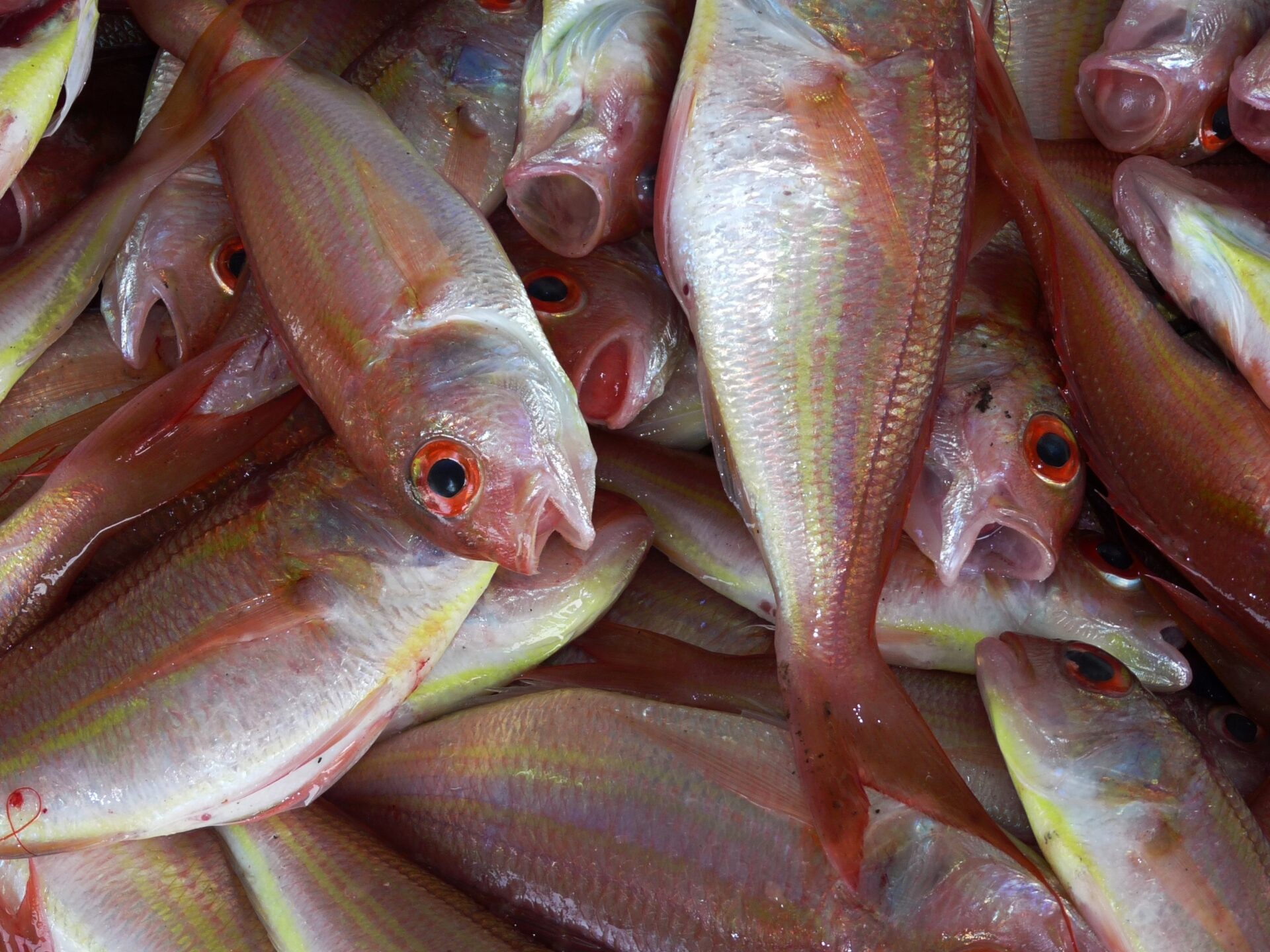Fishing for bluegill and sunfish can be an enjoyable and rewarding activity for freshwater anglers. With a little patience and some simple techniques, you can have a successful outing and catch a variety of different species in a variety of different environments. In this article, we will provide tips and techniques for fishing for bluegill and sunfish, so you can best prepare for your next freshwater fishing expedition.
Types of Bluegill and Sunfish
Bluegill and sunfish are two of the most popular fish species for freshwater anglers. While they may look similar, there are different types of bluegill and sunfish that can be targeted by fishermen. Knowing the different types can help anglers to better understand their prey and improve their success rate when fishing for these species.
Bluegill: Small But Aggressive
The most common type of bluegill is the common bluegill. This fish can be identified by its dark olive green body with a white underside, and the black-edged ear flap which gives it its name. The common bluegill is a relatively small fish, generally growing to no more than 8-10 inches in length. They are known for being a very aggressive species, and can often be found in shallow and weedy areas, as they feed on both insects and small fish.
Sunfish: Larger and More Colorful
Sunfish are larger than bluegill and come in a variety of different colors and patterns. The most common types include the largemouth and smallmouth bass, green sunfish, and pumpkinseed sunfish. Largemouth bass and smallmouth bass, as their name suggests, are the largest of the sunfish, but they are also the most difficult to catch. Green sunfish are typically found in weedy areas and have a pale green body with black spots, while pumpkinseed sunfish have more vibrant orange and red markings.
Finding and Catching Bluegill and Sunfish
Bluegill and sunfish can be caught in a variety of ways, including with baitfish, lures, and flies. They can also be caught using a wide range of techniques, including spinning, jigging, and trolling. The best way to locate these fish is to use a combination of techniques and to focus on areas with plenty of vegetation and structure.
Best Baits for Bluegill and Sunfish
When it comes to the best baits for bluegill and sunfish, live bait is often the best choice. Worms, small crayfish, and insects are all excellent baits for these species. Artificial lures such as spoons, spinners, and crankbaits can also be effective, as can small flies and jigs. Experiment with different baits to find out what is most effective in your area.
Tips for Successful Bluegill and Sunfish Fishing
When fishing for bluegill and sunfish, it is important to be patient and move slowly. These species are very sensitive to vibrations and can easily be spooked. It is also important to use the right size and type of hook and line for the type of fish you are targeting – smaller hooks and lighter lines are often best for bluegill, while heavier lines and larger hooks are better for sunfish. Finally, it is important to remember that bluegill and sunfish are catch-and-release fish, as they are an important part of the freshwater food chain.
Gear for Fishing Bluegill and Sunfish
When fishing for bluegill and sunfish, your tackle is a key part of the equation. The type of tackle you use will determine the success of your outing. There are a few basic pieces of gear that anglers should have in their arsenal.
Light-Action Rods and Reels
The ideal set up for bluegill and sunfish fishing is a light-action, spinning rod and reel. These types of rods are designed to cast light lures and to offer more sensitivity when a fish hits. The light-action also allows anglers to more easily play a hooked fish and reel it in. The light-action reel should be spooled with light-action line, typically four- to six-pound test.
Small Lures and Baits
Small-sized lures and baits are preferred when targeting bluegill and sunfish. These species are on the small side so lures and baits that are too large can be intimidating and can cause them to pass up a bite. Crankbaits, spinners, jigs, soft plastics, and small pieces of live bait such as worms are all great options that can be used to effectively target these fish.
Additional Necessities
In addition to the rod and reel and the lures and baits, there are a few other items that are necessary for a successful fishing trip. An assortment of lead split-shot sinkers, swivels, clips, and bobbers can come in handy when rigging a rig for these fish. An adequate supply of extra hooks, a pair of cutters and pliers, a landing net, and a stringer or cooler are also essential.
Fishing for bluegill and sunfish can be a great way to enjoy the outdoors. By making sure you have the right gear, you can maximize your chances of catching fish and having a successful day of fishing.
How to Find Bluegill and Sunfish
Learning to identify the different species of Bluegill and Sunfish is the first step in becoming an effective freshwater angler. Bluegill have a deep-bodied shape, small mouth, and vibrant colors ranging from yellow and green to black. Sunfish are typically a bit smaller, with a slimmer profile, slightly larger mouth, and duller colors ranging from olive and blue to brown.
Finding Bluegill and Sunfish in Freshwater
Bluegill and Sunfish are commonly found in freshwater bodies such as ponds, streams, and lakes. As they are naturally drawn to areas of high oxygen levels, they can often be found in the shallows, around lily pads and aquatic vegetation. Areas of structure and cover, such as fallen logs, rocks, and weed beds, are also likely spots to find them.
Bait and Lure Selection for Catching Bluegill and Sunfish
Once you have identified areas of high potential for finding Bluegill and Sunfish, you’ll need to select the appropriate bait or lure. For Bluegill and Sunfish, it’s best to use smaller baits and lures. Natural baits such as worms, larvae, crickets, and small insects all make great options. Artificial lures such as small spinners, jigs, and crankbaits are also very effective for attracting Sunfish and Bluegill.
The Best Fishing Techniques for Bluegill and Sunfish
The most effective techniques for catching Bluegill and Sunfish depend on the specific situation. Generally speaking, lighter line and tackle are recommended, as they will allow the angler to detect subtle bites. Slow, steady retrieves and a sensitive “thumping” or “twitching” action with the rod tip can also be very effective for attracting Sunfish and Bluegill. Experimentation is key in finding the perfect technique for any particular situation.
Baiting Techniques for Bluegill and Sunfish
Crankbait is a popular baiting technique for anglers looking to fish for bluegill and sunfish. This technique involves fishing with a crankbait, which is a type of hard lure with a bill or lip on the front that can be retrieved rapidly by reeling in. To use this technique, the angler casts the crankbait and then reels it in quickly and steadily, using jerky movements to attract the fish. This technique is especially effective when fishing in shallow water, as it will allow the angler to cover larger amounts of water quicker. Additionally, crankbaits come in a variety of colors and sizes to fit every fishing situation.
Live Bait for Bluegill and Sunfish
Live bait, such as worms, insects, and minnows, are also effective baiting techniques for bluegill and sunfish. Live bait is an effective way to target larger sunfish and bluegill, since these fish are more likely to strike a bait they can see. The angler should size the bait to the size of the fish they are targeting, as smaller live bait will be more appealing to smaller fish, while larger bait will be more attractive to bigger fish. Additionally, anglers should remember to keep their live bait alive by using aerated bait containers that can be found at any tackle shop.
Spinnerbaits for Bluegill and Sunfish
Spinnerbaits are another effective baiting technique for bluegill and sunfish. Spinnerbaits feature a metal blade that is designed to spin as the lure is retrieved, and this spinning motion attracts the attention of bluegills and sunfish. Spinnerbaits come in a variety of colors and sizes, and the angler should choose a spinnerbait that matches the type of fish they are targeting. Additionally, anglers should remember to use a slow and steady retrieve when using spinnerbaits, as fast retrieves can often scare away the fish.
Jigging for Bluegill and Sunfish
The last baiting technique for bluegill and sunfish is jigging. Jigging is a technique that involves raising and lowering a jig in the water in a jigging motion. This technique is effective because it mimics the natural feeding habits of bluegills and sunfish. Additionally, anglers should remember to use a jig that matches the size and color of the fish they are targeting. Jigs also come in a variety of shapes and sizes, and the angler should choose a jig that best fits the depth and texture of the water.
Which Baiting Technique for Bluegill and Sunfish is Most Effective?
Each of the baiting techniques for bluegill and sunfish discussed above can be effective in different fishing scenarios. Live bait is best for targeting larger fish, while crankbait and spinnerbaits are best for covering larger areas of water quickly. Jigging is a good technique for mimicking the natural feeding habits of the fish. Ultimately, choosing the best baiting technique will depend on the angler’s individual fishing situation.
Catching and Releasing Bluegill and Sunfish
When it comes to catching bluegill and sunfish, anglers must employ best practices when it comes to releasing their catches. Properly releasing and handling fish allows anglers to enjoy the rewards of fishing while ensuring the long-term health of our freshwater resources.
Use the Right Fishing Gear
When fishing for bluegill and sunfish, anglers should use the right type of gear to increase their chances of a successful catch and release. The size of the hook should match the size of the fish, so using a very small hook can increase the chances of a successful catch and release. Furthermore, anglers should use barbless hooks, as they cause less damage to the fish, making it easier to remove the hook and release the fish back into the water.
Practice Good Fish Handling
It’s important for anglers to practice good fish handling when catching and releasing bluegill and sunfish. This includes keeping the fish in the water as much as possible and using a wet towel or glove to handle the fish. This will help minimize the amount of slime and scales that are removed from the fish, which can make it more vulnerable to disease and infection.
Minimize Stress and Shock
When fishing for bluegill and sunfish, anglers must remember to minimize stress and shock to the fish. Excessive handling can cause the fish to become stressed and could even lead to death, so anglers should take care to minimize the amount of time the fish is out of the water. Using a dip net to scoop up the fish can also help minimize shock and stress.
Return the Fish to the Water
Once the catch is landed, anglers should quickly return the fish back to the water. Removing the hook from the fish’s mouth should be done as quickly as possible to minimize the risk of injury or infection. After the hook is removed, the fish should be gently placed back into the water and allowed to swim away.
By following these best practices when fishing for bluegill and sunfish, anglers can ensure they are practicing responsible and sustainable fishing while still enjoying the rewards of freshwater angling.
Catching Bluegill and Sunfish: Have Fun Reeling Them In!
Bluegill and sunfish are popular among freshwater anglers for their combative fighting and their delicious flavor. Novice and experienced anglers alike enjoy chasing these fish because they can be caught using equipment as simple as a cane pole, a bobber, and a tiny hook baited with a worm. With these basic tools, a person can take to any lake or pond and start casting for bluegill and sunfish. To increase success, anglers should use the right bait, find the right spot, and keep their line tight. When the fish strikes, do not overplay it; keep the line tight and reel it in with a few short and steady motions. No matter the size of the catch, fishing for bluegill and sunfish can be a rewarding experience. With the right tips and techniques, anglers of any skill level can have a great time bringing these beloved freshwater fish in and adding them to their dinner plate.





Leave a reply